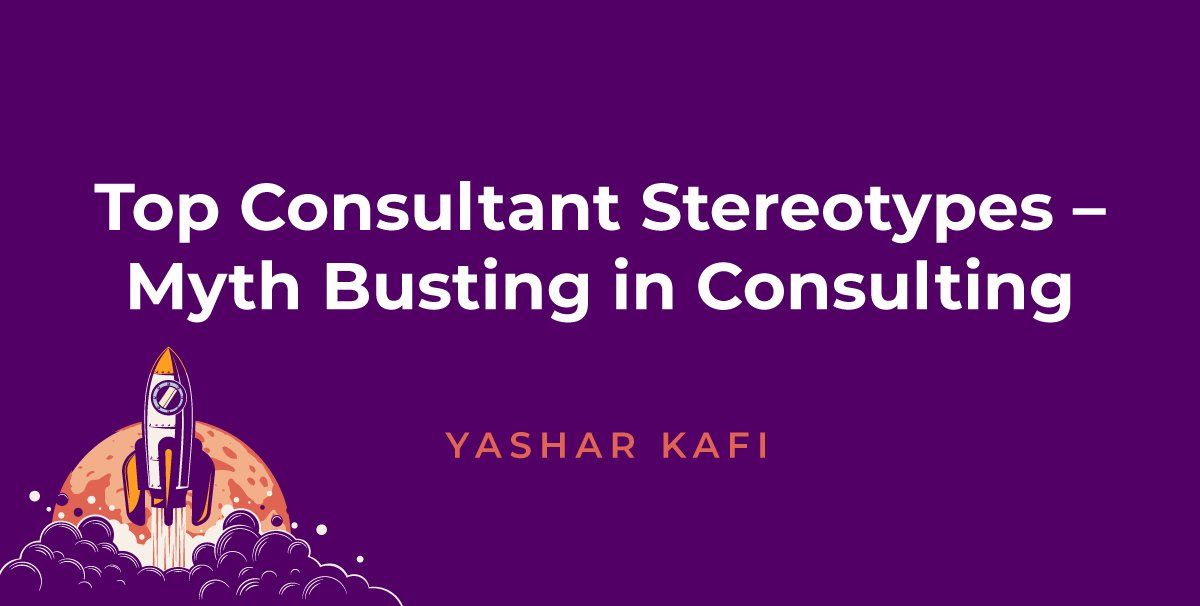Top Consultant Stereotypes – Myth Busting in Consulting
Making snap judgments based on unproven stereotypes is the worst. Why? Because allowing assumptions to rule your mindset before knowing the facts is the epitome of ignorance.
Consultants can fall victim to these preconceived judgments, giving us all an (undeserved) bad name. This article will address some of the top stereotypes about consultants and set the record straight.
Stereotype 1. Consultants Give Opinions But Don’t Learn Your Business
Perhaps the top consultant stereotype is that consultants are out of touch—or worse, apathetic—about your business and storm in and start trying to call the shots without first becoming familiar with your current state, needs, and goals for the future. If this were true, that would be awful. But this isn’t the case.
A consultant’s primary role is to lead you in achieving your goals, and for this reason, they know they must first be intimately acquainted with your framework. Also, with all of the hats consultants have to wear to help lead your company where it wants to go—a journey dotted with many challenges—these experts are like superheroes. And that requires much prep, training, and researching to keep themselves in business-saving shape.
Stereotype 2. Consultants Don’t Care About Your Business
Apathy is a characteristic that people sometimes apply to consultants: as in, we don’t actually care about your business. Speaking from experience and knowing many fellow consultants, most of us got into this field because we enjoy helping companies achieve their highest potential. We like to see you succeed. There is a rewarding satisfaction in knowing that we had a hand in helping you achieve your vision.
When you succeed, we succeed. When you win, it shows we are doing our jobs well. The whole purpose is to help you reach your highest achievement.
Stereotype 3. Consultants Only Want to Help Large Businesses
We live in a world where size matters, but contrary to common stereotypes, not all consultants are snobs who only work with mega-companies. Think of it like Goldilocks and the Three Bears and the bowls of porridge or beds. There is a consultant fit for every company, somewhere.
For example, there are over 18,796 small business consultants currently employed in the United States alone. This only includes those catering to small organizations—not those who primarily work with larger companies but are also open to accepting smaller clientele on a case-by-case basis.
Stereotype 4. Consultants Tell You What You Already Know
You’ve likely heard the phrase, “There is nothing new under the sun.” Well, I disagree, as one of the superpowers of consultants is having the ability to bring something new to the table, including a fresh perspective.
Sometimes it’s hard to see all your needs from the inside, and consultants can provide that third party, objective insight to help you get results. I like to think of them as business psychologists, helping you see things as they are and aiding you in adapting them to your advantage.
Stereotype 5. Consultants Are Expensive
It’s true, some consultants do charge a lot. But not all require you to take a second mortgage on your house to pay the fee.
If you invest in a consultant, you should always feel—and see proof—that what you are paying your consultant is worth your investment in the long run (i.e., you are reaching your goals and satisfied with the service). Check out our list of what to look for to ensure that you hire a consultant worth their salt.
Are you ready to enlist a consultant to help get you where you want to go? Connect with us to learn how we can help.




